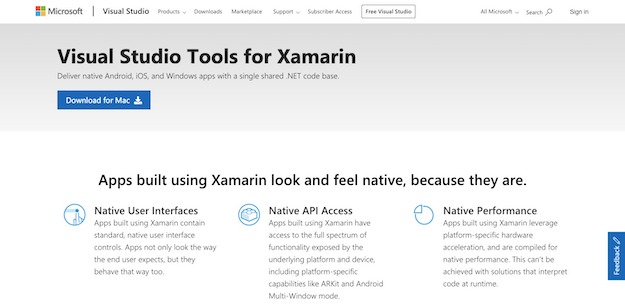Two years ago, the value of the mobile app market was a bit more than $88 billion. Today, the experts forecast its increase by $100 billion in the next two years! With that in mind, we can state that nowadays software engineers are in good standing to join the cohort of mobile developers. At the same time, there is no need to focus on a single domain knowledge vector. This means a company can build a single app for Android, iOS and other operating system if necessary. The market is filled with versatile solutions meant for creating cross-platform mobile products. And here are some best options to choose from.
Don’t Miss-
React or Angular: How to Pick One Among these Popular JavaScript Frameworks?
Build a Clean Node.js Application with Express Framework
React Native
In most articles and publications dedicated to the selection of frameworks for building cross-platform apps, React Native is put somewhere in the middle or even bottom. With all respect to their authors, we cannot agree that the framework with the largest popularity growth rate for the last couple of years should be out of the top. It’s closely associated with Facebook, the framework’s creator, as well as numerous famous names like Instagram or Tesla, which leverage the tool for their mobile products. Moreover, React Native comes in the toolbox of numerous software companies and product studios like Railsware.
React Native’s hallmark is the use of native UI components. They make an app feel and look similar to those created with a native technology like Java or Objective-C. Meanwhile, most of the codebase is written in JavaScript. Eventually, JS code is bridged with UI blocks to deliver a close-to-native mobile product (though it’s claimed to be fully native). Truth be told, apps created with the Facebook’s tool lose out to native ones a little in terms of performance and UX. Nevertheless, they definitely win as for development cost and time. Besides, the future of this technology promises to be rather bright, at least in the coming years.
Check Here
Ionic

This solution is traditionally referred to the hybrid dev approach meaning an app is a website embedded on a mobile platform using the WebView, an HTML rendering engine. Nevertheless, in the context of this article, we make an emphasis on the frameworks which follow the write once and run everywhere principle, and Ionic belongs to them. The tool is a successor of Apache Cordova (formerly PhoneGap), another framework for hybrid app building. At the same time, Ionic is allied to Angular and adopted some of its working principles.
Apps built with Ionic cannot boast a high performance or native UX. In most cases, these aspects are to be sacrificed in favor of a short TTM and low budget. Besides, the availability of native-styled UI components facilitates the project pipeline. Other Ionic advantages include a short learning curve, fast prototyping, and powerful command line interface. Since cognition comes through comparison, it’s highly advised to review the framework in relation to a pure cross-platform technology, for example, Ionic vs. React Native.
Check Here
Xamarin

Both tools above have the same roots – they have JavaScript at heart. Xamarin is a different story since it’s based on C#, so the app’s codebase will be written in it. The framework is rather mature and popular. For over seven years of existence, it has attracted 1.5+ million software engineers. It is interesting that Xamarin had not been open source until 2016 when a world-known software giant, Microsoft, bought it and took off the gyves.
The tool is based on another framework – .NET. This relatedness allows the Xamarin users to enjoy some useful .NET features like asynchronous programming or LINQ. Similar to React Native, the framework pretends to have its apps called native as for performance and UX. In fact, apps built with these cross-platform tools have a common architectural pattern. The difference is that Xamarin uses C# for the codebase bridged with native libraries. The end-user can enjoy the user experience comparable to the native one on any device. Nevertheless, the framework cannot be called a silver bullet. Such drawbacks as unsuitability for heavy graphics, a large size of apps, and the necessity to write a platform-specific layer of code using native technologies like Java or Swift to achieve a truly native look and feel should be taken into account.
Check Here
The three frameworks we mentioned above deserve to be on top among other options. However, there are many reviews and opinions where one can encounter such market dinosaurs as Appcelerator Titanium, Apache Cordova, NativeScript and others. To some extent, they can be also a good choice according to particular project requirements.










Leave a Reply